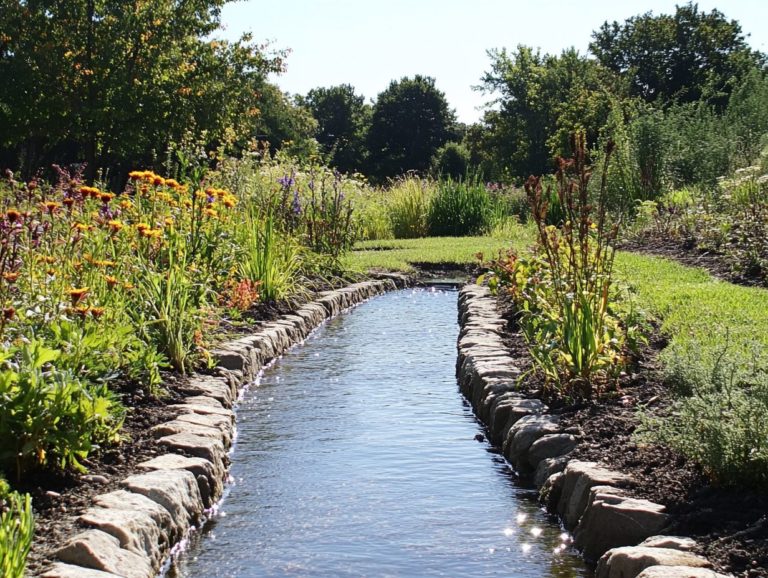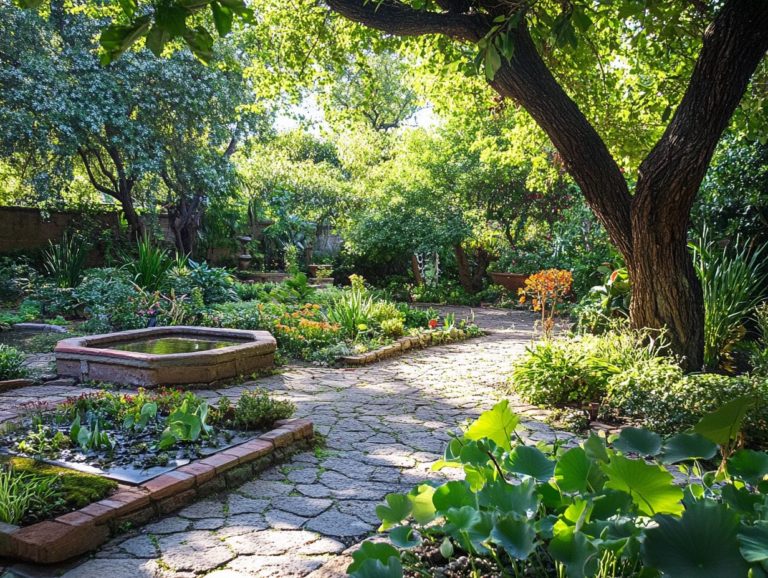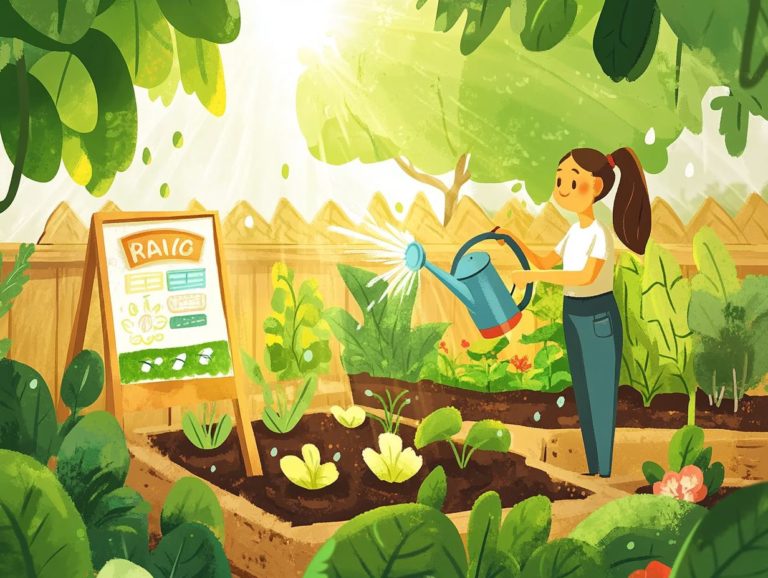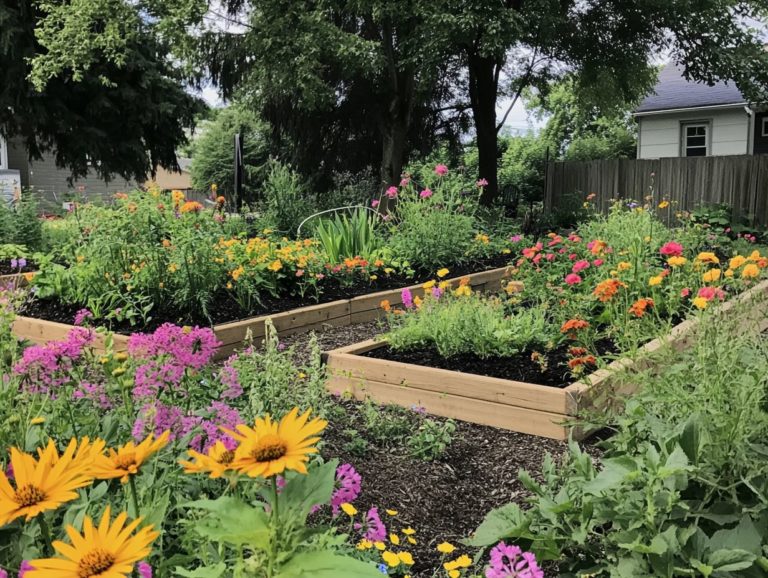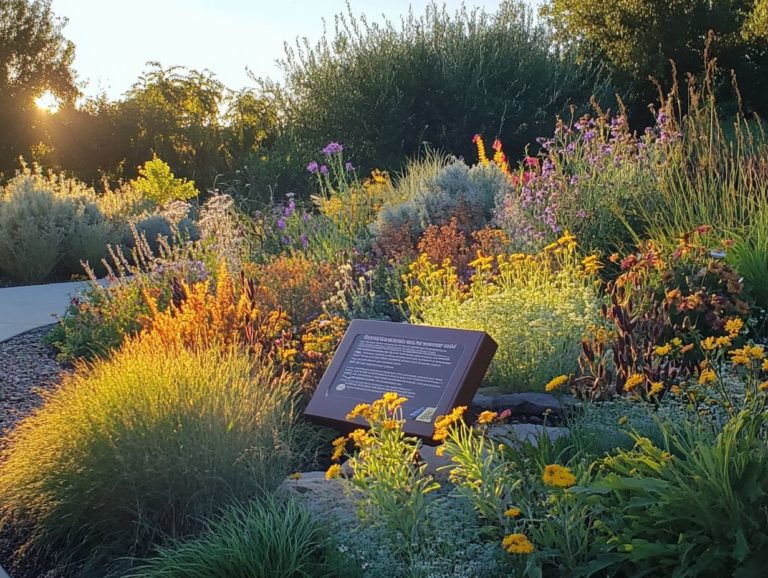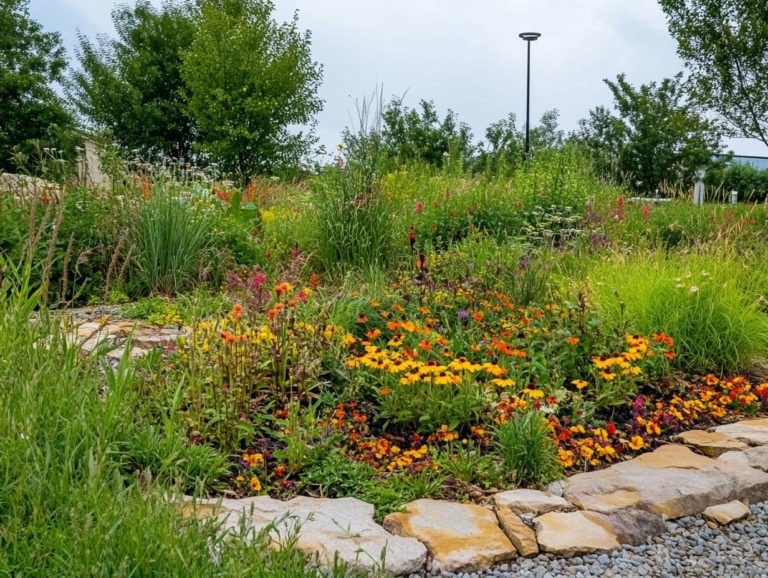Top 5 Water-Saving Strategies for Gardens
In a time when water conservation has become paramount, cultivating a sustainable garden is a powerful way for homeowners like you to reduce your environmental footprint. Let’s dive in!
This article explores five impactful strategies you can use to save water in your garden everything from choosing native and drought-tolerant plants to adopting smart irrigation systems.
Even straightforward adjustments, like applying mulch and harvesting rainwater, can lead to significant benefits.
Join us as we navigate through landscaping techniques that conserve water and enhance the beauty of your outdoor sanctuary.
Contents
- Key Takeaways:
- 1. Choose Native or Drought-Tolerant Plants
- 2. Use Mulch to Retain Moisture
- 3. Install a Drip Irrigation System
- 4. Collect and Reuse Rainwater
- 5. Incorporate Water-Saving Techniques into Landscaping Design
- Why Is Water Conservation Important for Gardens?
- Frequently Asked Questions
- What are the top 5 water-saving strategies for gardens?
- How does using a drip irrigation system save water in gardens?
- What is the benefit of mulching in a garden for water conservation?
- How do drought-resistant plants help save water in gardens?
- How can collecting rainwater be used as a water-saving strategy for gardens?
- Why is using a timer for watering important for water conservation in gardens?
Key Takeaways:
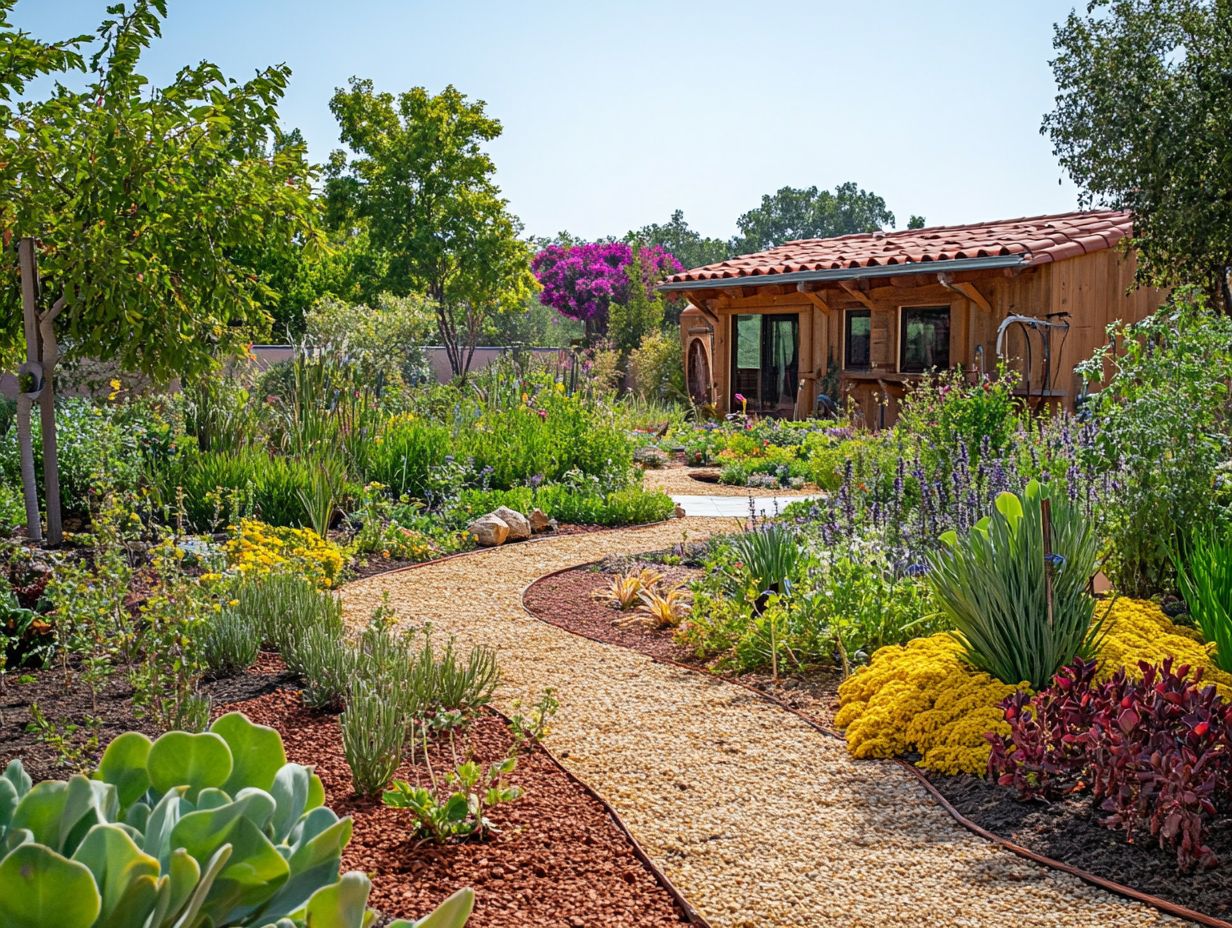
- Choose plants that are native to your region or can tolerate drought conditions to save water in your garden.
- Using mulch helps retain moisture in the soil, reducing the need for frequent watering and promoting healthier plants.
- A drip irrigation system efficiently delivers water directly to your plants, minimizing waste and saving you time and effort.
1. Choose Native or Drought-Tolerant Plants
Choosing native or drought-tolerant plants is crucial for cultivating a vibrant garden while conserving water. These varieties are well-suited to your local climate and require less maintenance, making them an excellent choice, especially in drought-prone areas.
By selecting native plants and drought-resistant varieties, you elevate the beauty of your garden and make a positive contribution to local ecosystems. These plants attract beneficial wildlife, such as pollinators and birds, enriching biodiversity in your area.
When exploring your options, research foliage, bloom times, and soil conditions to ensure optimal growth. Drought-tolerant varieties can greatly enhance your landscape’s visual appeal with their unique textures and colors, allowing you to enjoy an aesthetically pleasing setting while embracing sustainable gardening practices.
These thoughtful choices promote water efficiency and can make a significant difference in regions where water conservation is essential.
2. Use Mulch to Retain Moisture
Using mulch is an effective strategy for retaining moisture in your garden. This reduces the need for frequent watering and promotes healthy plant growth.
By applying various mulch types like wood chips, straw, or grass clippings you can choose materials that align with your soil and plant needs. Each type helps enhance moisture retention and regulates soil temperature, creating an ideal environment for roots.
This insulation effect keeps the soil warm during colder months and cool during heat waves, further promoting soil health.
When applying mulch, aim for a layer about two to four inches thick around your plants, ensuring you don t pile it against the stems to prevent rot. By using mulch, you can significantly reduce water usage in your garden, minimizing evaporation and embracing a more sustainable approach.
3. Install a Drip Irrigation System
Installing a drip irrigation system is a smart move for homeowners who want to achieve efficient irrigation. This system delivers water directly to the roots of your plants, significantly reducing water waste and helping you maintain a consistent watering schedule.
The system features essential components like adjustable timers, hoses, and emitters, which allow you to customize water delivery based on your plants’ needs. You can program the timers to release water at precise intervals, ensuring your plants receive moisture at the right time.
This method not only conserves water but also promotes plant health by preventing common issues like overwatering and runoff. Integrating this system with additional water-saving products such as moisture sensors and rain collection barrels can enhance efficiency and sustainability, ultimately creating a more vibrant and eco-friendly garden space.
4. Collect and Reuse Rainwater
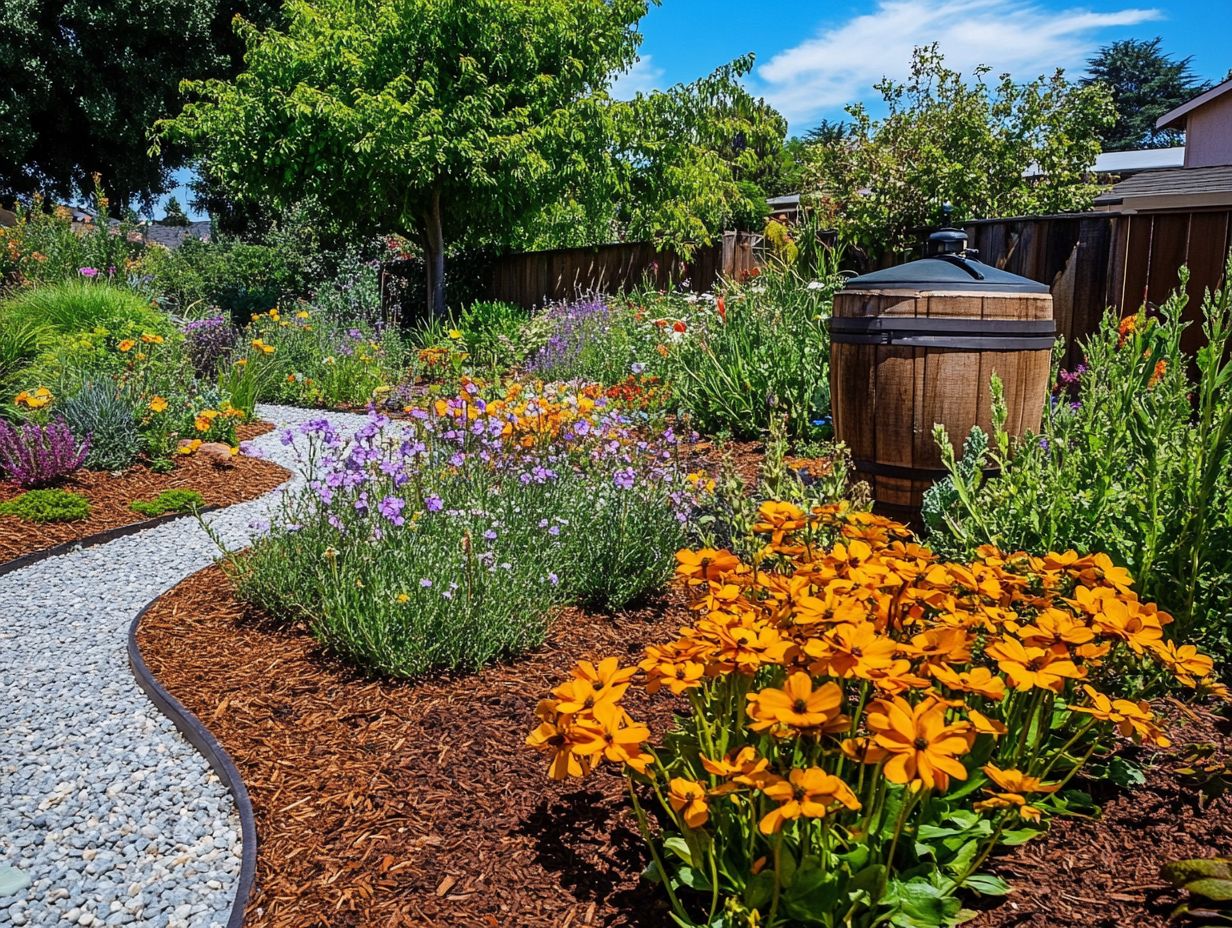
Collecting and reusing rainwater through rain barrels is a smart move for homeowners who want to recycle water and enhance their gardening efforts, especially in regions where water conservation is essential. Imagine enjoying lower water bills!
This sustainable approach is straightforward. Simply install rain barrels beneath your downspouts to capture runoff from your rooftops during rainstorms. Once collected, this precious water can be used for a variety of tasks think irrigating your gardens, washing your car, or filling birdbaths.
You ll enjoy several benefits, including lower water bills and reduced reliance on municipal water, which plays a vital role in environmental conservation.
Setting up a rain barrel system is easy:
- Choose the right barrel.
- Ensure proper filtration.
- Utilize a spigot for easy access to the water.
By harnessing this natural resource through rainwater harvesting, you ll contribute to reducing stormwater runoff and erosion, helping conserve our precious non-renewable freshwater sources.
5. Incorporate Water-Saving Techniques into Landscaping Design
Incorporating water-saving techniques into your landscaping design like water-efficient gardening methods allows you to create stunning gardens that are environmentally friendly and significantly lower your water usage.
By carefully selecting drought-resistant plants that thrive in your local climate, you can enhance both the beauty and sustainability of your space. Consider soil types; well-drained, nutrient-rich soils support native flora, minimizing the need for fertilizers and extensive irrigation.
Adopting efficient irrigation practices, such as drip systems methods that deliver water directly to the roots of plants can optimize your water use, ensuring that every drop counts. When these principles are harmoniously integrated with traditional landscaping elements, they contribute to ecological conservation and promote healthier garden ecosystems.
Why Is Water Conservation Important for Gardens?
Water conservation is essential for your garden; it not only mitigates the impacts of drought but also ensures your soil retains vital nutrients, fostering healthier plant growth and sustainability.
By prioritizing water-saving techniques, you play a crucial role in tackling broader environmental challenges, including climate change and habitat degradation.
Different soil types interact with moisture levels uniquely. For example, sandy soils drain quickly and require more frequent watering, while clay soils hold onto water but can become compacted. Understanding these dynamics allows you to tailor your watering strategies effectively.
When you practice water conservation, healthy ecosystems thrive, supporting a rich array of plants and creatures and leading to a balanced garden ecosystem that flourishes.
What Are the Benefits of Using Native or Drought-Tolerant Plants?
Opting for native or drought-tolerant varieties brings numerous advantages that you ll appreciate. They significantly reduce water consumption, enhance biodiversity, and foster a thriving ecosystem that supports local wildlife.
These plants typically demand less maintenance, giving you back precious time to enjoy your lush garden instead of tirelessly caring for it. They tend to be more resilient against local pests and diseases, meaning you ll rely less on chemical treatments and embrace a more organic gardening approach.
By choosing these varieties, you can elevate the aesthetic appeal of your garden, crafting visually stunning spaces that resonate with the beauty of your region. These plants also attract pollinators and other beneficial creatures, enriching the ecological value of your surroundings and creating a flourishing environment.
Start your journey towards a sustainable garden today by incorporating these practices!
How Does Mulch Help Conserve Water in Gardens?
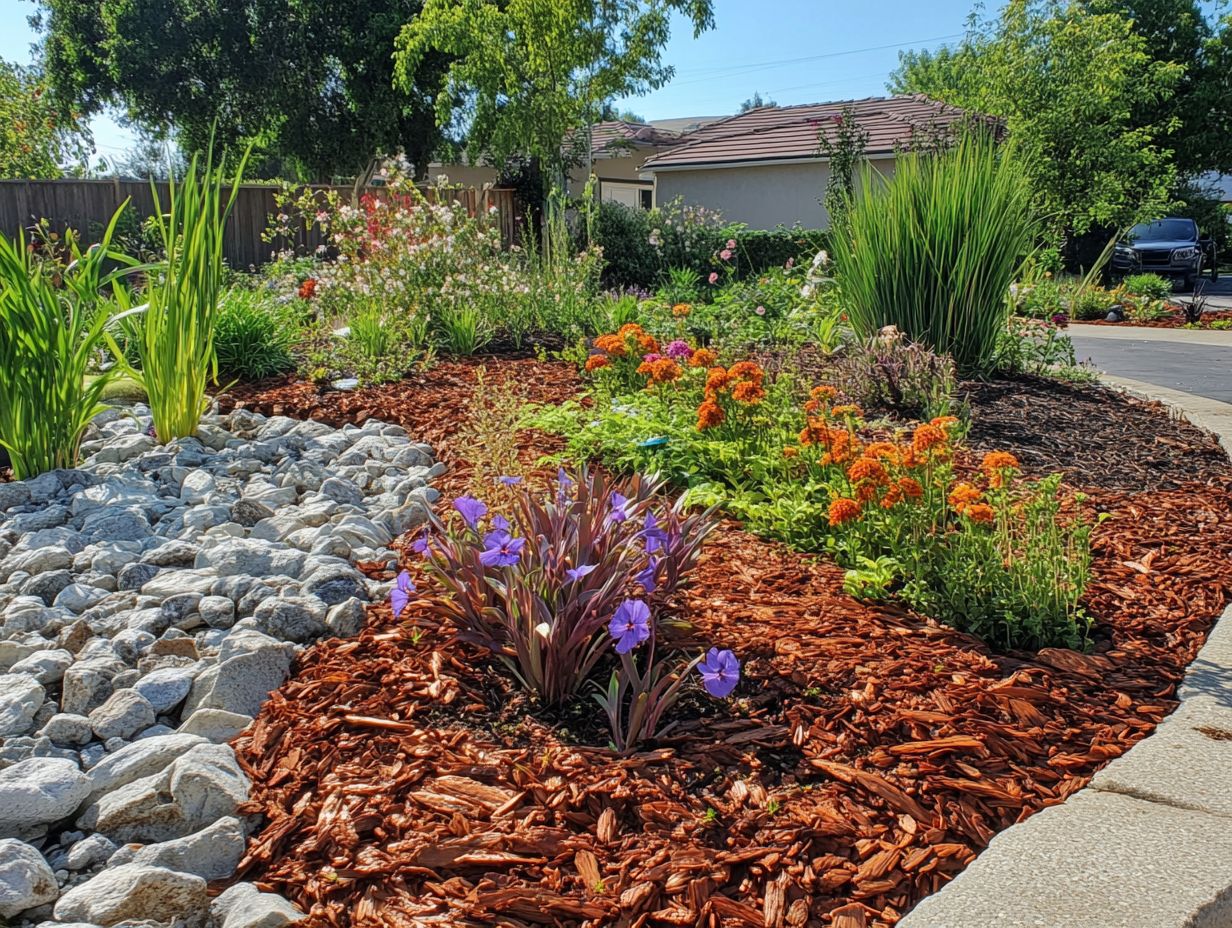
Mulch is essential for conserving water in your garden. It enhances moisture retention, regulates soil temperature, and curbs weed growth that competes for those precious water resources.
There are various types of mulch available, such as wood chips, straw, and shredded leaves. Each type caters to different plants and gardening needs, offering unique benefits like improving moisture retention. For example, organic mulches not only enrich the soil as they break down but also create a welcoming habitat for beneficial organisms. In contrast, rubber, gravel, or other durable mulches are great choices for xeriscaping.
To maximize the benefits of mulching, apply a layer of about two to four inches and keep it away from plant stems. This practice ensures healthy air circulation and significantly reduces the need for frequent watering.
What Are the Advantages of Drip Irrigation Systems?
Drip irrigation systems offer numerous benefits for homeowners, including remarkable water savings, minimized weed growth, and the ability to deliver precise watering patterns tailored to specific plants. These systems also lower your water bills while fostering healthier plant growth by directing water straight to the root zone.
Unlike traditional irrigation methods, which often lead to runoff and uneven moisture distribution, drip irrigation ensures each plant receives exactly the right amount of water it needs. You can easily install it yourself without an arsenal of tools or expert knowledge. This efficient method conserves valuable resources and reduces the time you spend on garden maintenance, making it a wise investment.
How Can Rainwater Collection Benefit Gardens?
Rainwater collection offers numerous advantages for your garden. It allows you to recycle water, lower your water bills, and tap into a natural source of irrigation free from the chemicals often found in tap water.
By harnessing this invaluable resource, you can cultivate a sustainable ecosystem that fosters healthier plant growth. Natural rainwater is often richer in nutrients than treated water, resulting in vibrant flowers and robust vegetables.
Utilizing rainwater is also a smart way to conserve resources during dry spells, reducing strain on municipal water supplies. To truly maximize your rainwater collection systems, consider:
- Installing rain barrels or larger cisterns.
- Strategically positioning them to capture runoff from rooftops.
Regular maintenance such as cleaning your gutters and ensuring downspouts are clear will optimize this eco-friendly approach. It not only benefits your garden; it positively impacts the environment as a whole.
What Are Some Landscaping Design Strategies for Water Conservation?
Implementing landscaping design strategies for water conservation, such as using xeriscape techniques and selecting native plants, can transform your garden into a vibrant, sustainable oasis that thrives on minimal water usage.
By thoughtfully grouping plants based on their specific water needs, you can ensure efficient water use, providing each plant with just the right amount to flourish.
Opting for permeable materials those that allow water to pass through in your pathways and patios lets rainwater seep naturally into the soil. This practice replenishes groundwater reserves and reduces harmful runoff.
Incorporating efficient irrigation systems, like drip irrigation and smart timers, will significantly minimize water wastage.
This mindful approach to landscape design nurtures the garden’s health while fostering essential water savings, ultimately creating a more eco-friendly environment.
Frequently Asked Questions
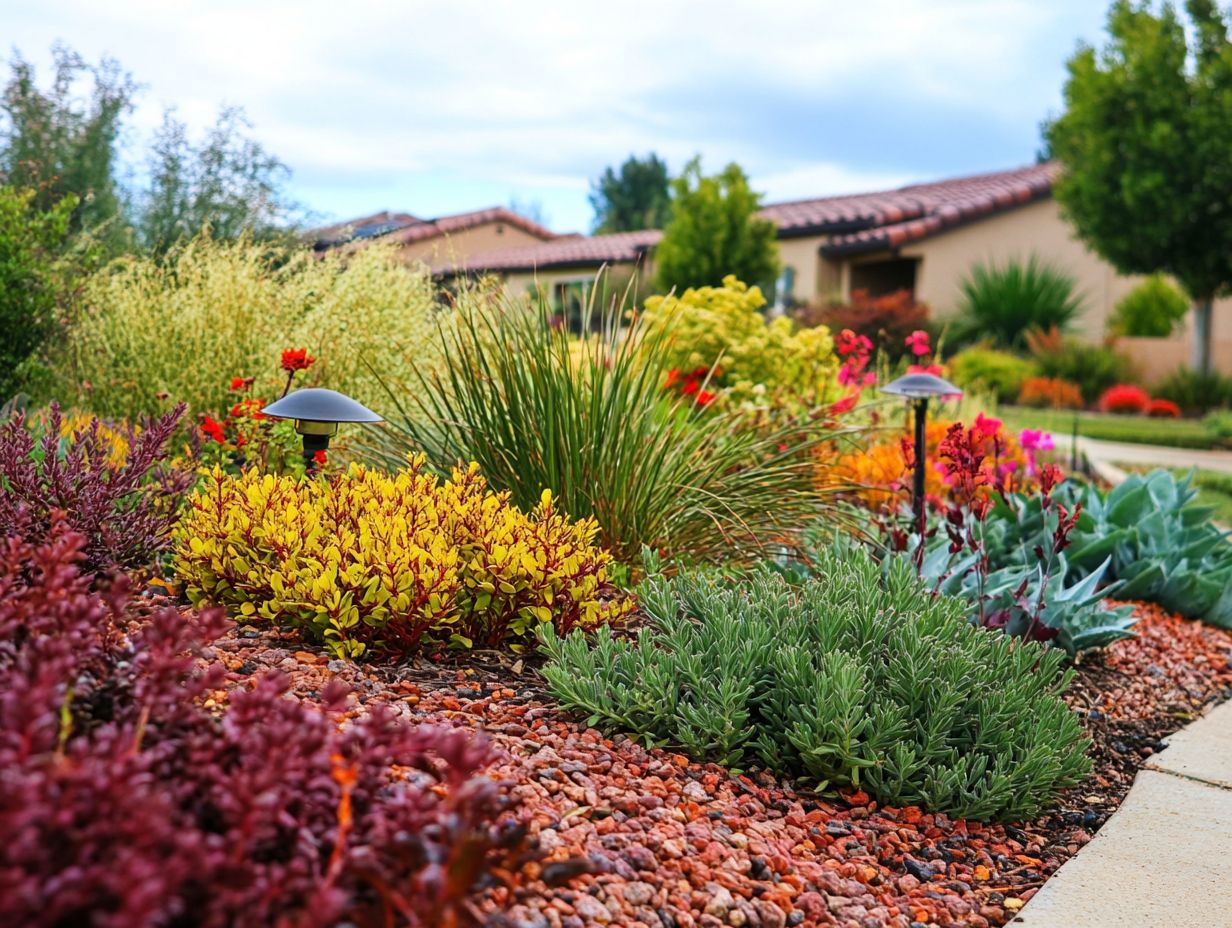
What are the top 5 water-saving strategies for gardens?
Here are the top 5 water-saving strategies for your garden:
- Use drip irrigation systems.
- Mulch.
- Plant drought-resistant plants.
- Collect rainwater.
- Use a watering timer.
How does using a drip irrigation system save water in gardens?
Drip irrigation delivers water directly to the roots of plants, reducing water loss from evaporation and runoff. By using drip irrigation, you can save as much as 50% more water compared to traditional methods.
What is the benefit of mulching in a garden for water conservation?
Mulching helps retain moisture in the soil, which means you don’t need to water as often. It also prevents weed growth that competes with plants for water and nutrients.
How do drought-resistant plants help save water in gardens?
Drought-resistant plants thrive in dry conditions and require less water than other plants. By incorporating these plants into your garden, you can significantly reduce your overall water usage.
How can collecting rainwater be used as a water-saving strategy for gardens?
Collecting rainwater in barrels or cisterns allows you to store water for watering plants during dry periods. This practice reduces reliance on municipal water sources and helps conserve water resources.
Why is using a timer for watering important for water conservation in gardens?
A timer ensures that plants receive just the right amount of water, preventing over-watering and reducing waste. It also allows for efficient scheduling of watering times.
Start implementing these strategies today! Every drop counts!

